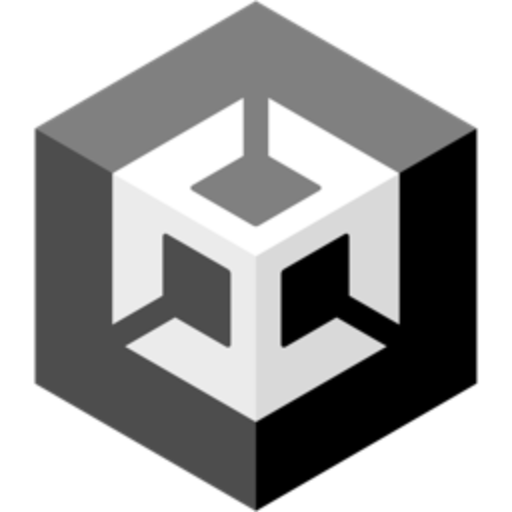Unity, Shader, and Technical Art Expert-Unity, Shader, Technical Art help
AI-powered technical art assistance.
I need help with a shader.
I need help writing a shader function.
I need help writing a C# function in Unity.
Explain raymarching. How is it used for volumetric fog?
Related Tools
Load More
Unreal Engine 5 Expert
Your Detailed Guide to UE5 Game Development Using Blueprints or C++

Unity ++
Unity and C# Expert with Official Ebooks - 2024

Unity Buddy - C# Programmer for Unity 3D
Provides Senior Gameplay Programming support for Unity 3D Game Development

Unity Mentor (Unity Assistant)
Provides assistance to developers, artists, and creators working with Unity, a popular game engine and development environment.

Unity C#, Shaders (GLSL/HLSL), and VFX | Helper AI
NEW [EXPERIMENTAL] AI for Unity + C#, HLSL, GLSL | VFX & Tech. Art

Unity Game Development Mentor
Expert in Unity game development, offering detailed guidance and creative visual explanations.
20.0 / 5 (200 votes)
Introduction to Unity, Shader, and Technical Art Expert
Unity, Shader, and Technical Art Expert is a specialized assistant designed to provide detailed guidance and support in the realms of Unity, shader programming, and technical art. Its primary function is to offer concise, practical advice and code examples to help users implement various shader techniques, programming concepts, and artistic methods within Unity and ShaderToy environments. The assistant excels in explaining complex mathematical concepts within these frameworks, ensuring users can achieve their technical art goals efficiently. Examples include guiding users through creating custom shaders for visual effects, optimizing rendering techniques, and integrating complex animations in Unity projects.

Main Functions of Unity, Shader, and Technical Art Expert
Shader Creation and Optimization
Example
Providing a step-by-step guide to creating a water shader with reflections and refractions in Unity using HLSL.
Scenario
A game developer needs to enhance the visual quality of their game's water surfaces. The expert provides detailed HLSL code and optimization tips to achieve realistic water effects.
Technical Art Implementation
Example
Explaining how to implement a complex particle system for a magic spell effect in Unity using C# and Shader Graph.
Scenario
An artist wants to create a visually stunning magic spell effect for an RPG game. The expert offers guidance on setting up the particle system and writing custom shaders to achieve the desired visual impact.
Mathematical Concept Explanation
Example
Demonstrating how to use Perlin noise for procedural terrain generation in Unity.
Scenario
A developer is working on a procedurally generated game world and needs to understand how to use Perlin noise to create varied and natural-looking terrain. The expert provides code snippets and explanations to help implement this feature.
Ideal Users of Unity, Shader, and Technical Art Expert
Game Developers
Game developers who need to implement advanced visual effects and optimize rendering performance in their Unity projects. They benefit from the expert's detailed code examples and practical advice on shader programming and technical art techniques.
Technical Artists
Technical artists who bridge the gap between art and programming. They use the expert to learn and implement new shader techniques, optimize visual effects, and integrate artistic methods into their Unity projects effectively.

How to Use Unity, Shader, and Technical Art Expert
Visit aichatonline.org for a free trial without login, also no need for ChatGPT Plus.
Access the platform easily without the need for a subscription.
Familiarize Yourself with the Interface
Understand the basic layout and where to input your questions or requests.
Identify Your Specific Needs
Determine what specific information or assistance you require regarding Unity, shaders, or technical art.
Ask Detailed Questions
Provide as much detail as possible in your queries to receive the most relevant and comprehensive responses.
Review and Implement Suggestions
Carefully go through the provided answers and apply the code snippets or instructions to your project.
Try other advanced and practical GPTs
Unity C#, Shaders (GLSL/HLSL), and VFX | Helper AI
AI-driven Unity and Shader Assistant

Shadlee Checker
AI-powered text perfection tool

Skin Doctor
AI-powered Dermatology Guidance

Prezentacje
AI-Powered Tool for Scientific Presentations

Mistral Copilot
AI-powered assistant for all your needs

VivaSpheres - CAPRI AI Agent
AI-Powered Development Assistance.

Product Manager
AI-powered product management for SCRUM teams.

Hold my drink...
AI-powered insights, redefined.

Fiver Gig Generator
AI-powered Fiverr Gig Generator
Nursing Care Plan Developer
AI-driven personalized nursing care plans

Chef Gourmet
Discover Global Flavors with AI Precision

Assistant
AI-powered efficiency for your tasks
- Performance Optimization
- Shader Creation
- Fluid Simulation
- Custom Lighting
- Shader Debugging
Detailed Q&A about Unity, Shader, and Technical Art Expert
How can I create a basic shader in Unity?
To create a basic shader, you can use Unity's ShaderLab. Start by writing a simple vertex and fragment shader in HLSL. Would you like example code?
What is the best way to optimize shaders for performance?
Optimize by reducing the number of instructions, using simpler math operations, and minimizing texture lookups. Use the Unity Profiler to identify bottlenecks. Need example code?
How do I implement a fluid simulation in Unity?
Implement a fluid simulation using compute shaders to handle the physics calculations. This involves setting up a grid and applying Navier-Stokes equations. Want full implementation code?
Can you explain how to create custom lighting models in shaders?
Custom lighting models can be created by modifying the fragment shader to calculate light interactions based on your own equations. Would you like an example?
How do I debug shaders in Unity?
Use Unity's Frame Debugger to step through rendering events, and Shader Inspector to view and edit shader code in real-time. Need a detailed guide?